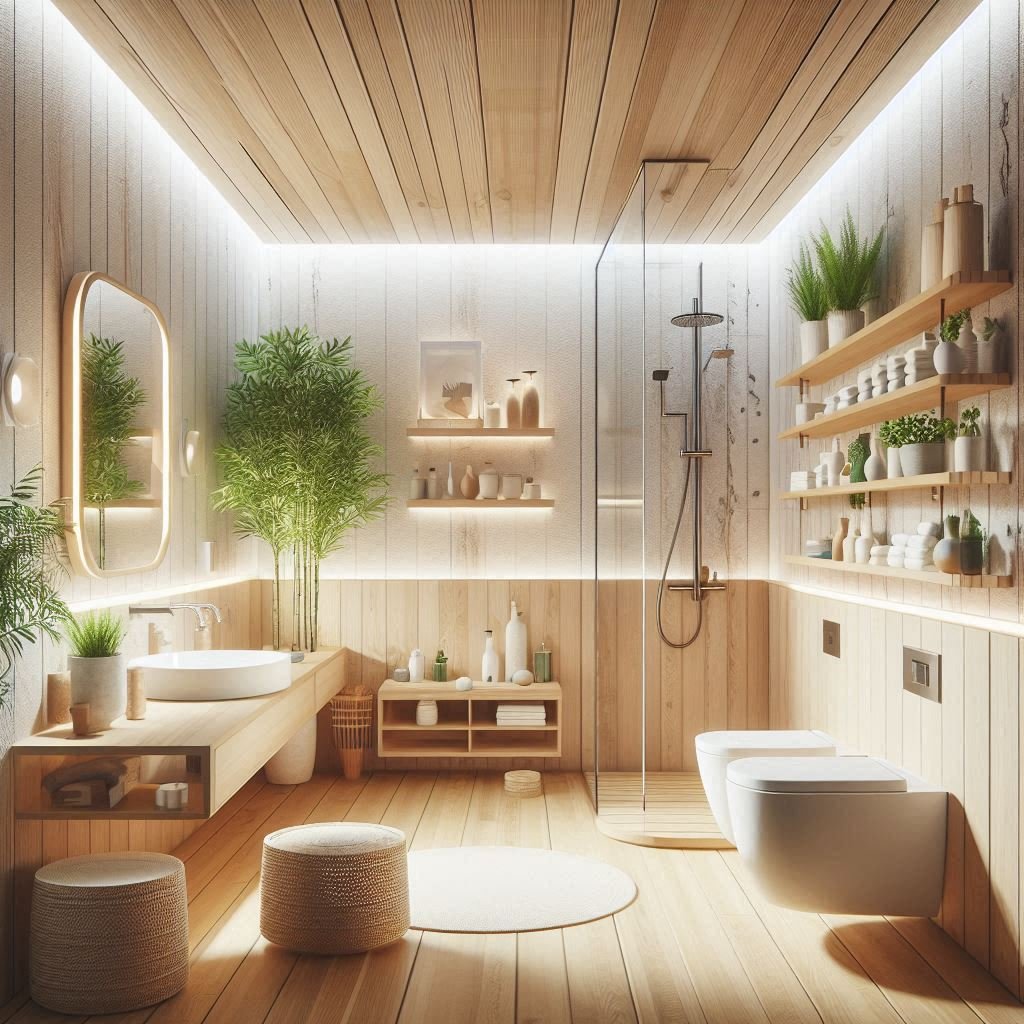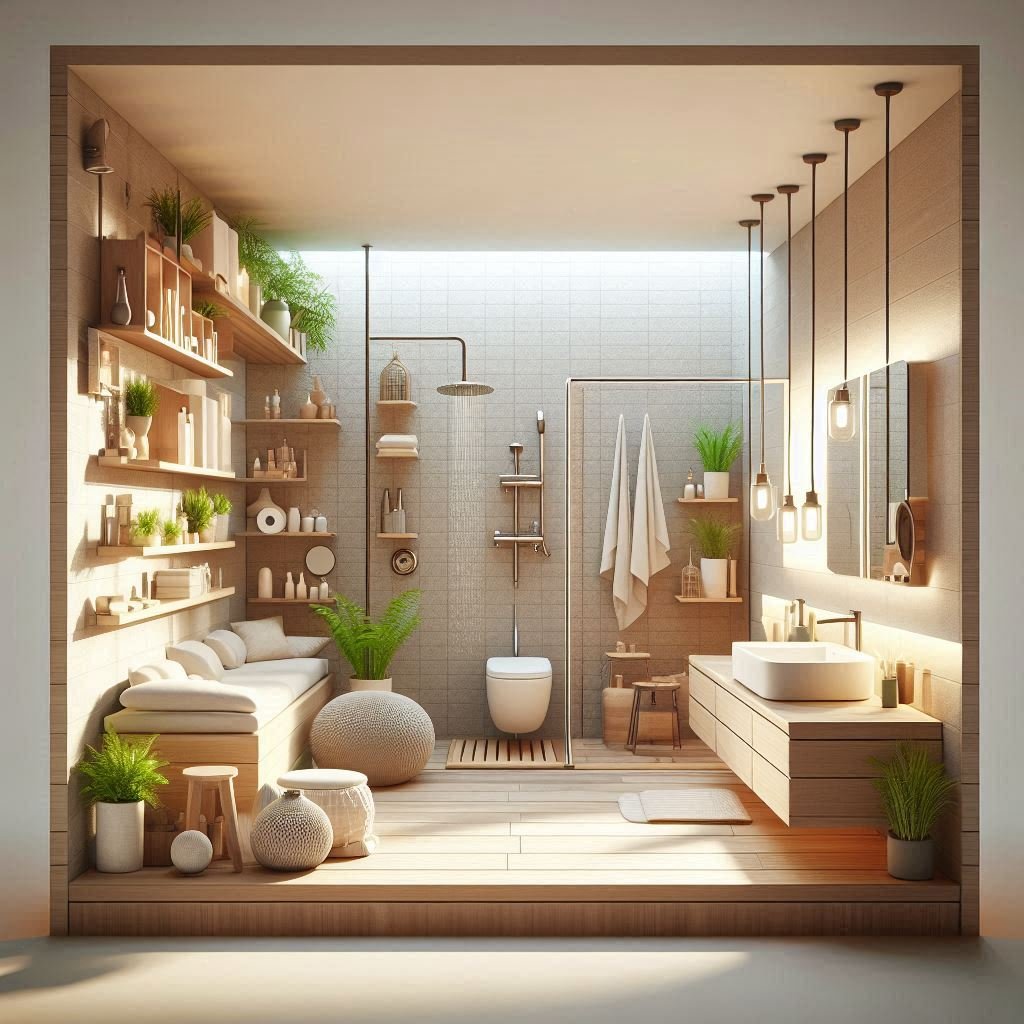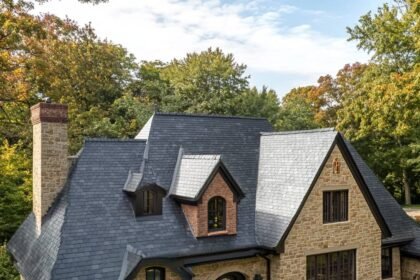Are you looking to update your bathroom while also doing your part for the environment? Eco-friendly bathroom renovations not only reduce your carbon footprint but also save you money on utility bills. In this guide, we’ll explore practical ways to make your bathroom more sustainable by conserving water and energy.
Why Choose Eco-Friendly Renovations?
Embracing eco-friendly renovations offers multiple benefits:
- Cost Savings: Lower water and energy bills over time.
- Environmental Impact: Reduce your household’s carbon footprint.
- Home Value: Increase the resale value with sustainable features.
- Health Benefits: Improve indoor air quality with eco-friendly materials.

Water-Saving Solutions
1. Install Low-Flow Fixtures
Low-Flow Shower Heads
- Benefits: Use up to 50% less water without compromising pressure.
- Installation: Easy DIY project; simply replace your existing shower head.
Dual-Flush Toilets
- Functionality: Offers two flush options—half and full flush.
- Savings: Can reduce toilet water use by up to 67%.
2. Fix Leaks Promptly
- Check Regularly: Inspect faucets, shower heads, and pipes.
- Simple Repairs: Often, a worn-out washer or seal is the culprit.
3. Opt for Water-Efficient Appliances
Eco-Friendly Faucets
- Aerators: Mix air with water to maintain pressure while using less water.
- Touchless Models: Reduce water waste by automatically shutting off.
Energy-Efficient Upgrades
1. Switch to LED Lighting
- Long-Lasting: LEDs can last up to 25 times longer than incandescent bulbs.
- Energy Consumption: Use at least 75% less energy.
2. Install Energy-Efficient Ventilation Fans
- Purpose: Remove moisture to prevent mould growth.
- Features: Look for fans with timers or humidity sensors.
3. Use a Tankless Water Heater
- On-Demand Heating: Heats water only when needed.
- Efficiency: Can be 24-34% more energy-efficient than traditional heaters.
Sustainable Materials and Practices
1. Choose Eco-Friendly Flooring
Bamboo Flooring
- Renewable Resource: Bamboo grows faster than traditional wood.
- Durability: Highly resistant to moisture and scratches.
Recycled Tiles
- Options: Glass or ceramic tiles made from recycled materials.
- Aesthetics: Offers a unique and stylish look.
2. Low-VOC Paints and Sealants
- Healthier Air Quality: Reduces harmful emissions.
- Selection: Available in a variety of colours and finishes.
3. Reclaimed or Recycled Fixtures
- Vintage Pieces: Add character while promoting reuse.
- Upcycled Items: Repurpose old furniture for storage solutions.
Smart Technology Integration
1. Smart Showers
- Features: Temperature control, timers, and even music.
- Benefits: Reduce water use by setting maximum shower times.
2. Automatic Faucets
- Sensor-Activated: Water flows only when hands are detected.
- Hygiene and Efficiency: Minimises touchpoints and water waste.
3. Programmable Thermostats
- Temperature Control: Manage heating in your bathroom efficiently.
- Energy Savings: Schedule heating times to avoid unnecessary energy use.
Summary Table
| Eco-Friendly Upgrade | Benefits |
| Low-Flow Fixtures | Save water without losing pressure |
| LED Lighting | Reduce energy consumption |
| Tankless Water Heater | On-demand hot water, more efficient |
| Eco-Friendly Flooring | Sustainable materials, durable options |
| Smart Technology | Automated systems to save resources |
| Low-VOC Paints | Improve indoor air quality |
Conclusion
Transforming your bathroom into an eco-friendly haven doesn’t have to be overwhelming or expensive. By making thoughtful choices—like installing low-flow fixtures, using sustainable materials, and integrating smart technology—you can significantly reduce water and energy consumption. These changes not only benefit the planet but also provide long-term savings for you.
FAQs
Low-flow fixtures can reduce water usage by up to 60%, leading to significant savings on your water bill over time.
While some sustainable materials may have a higher upfront cost, they often last longer and can save money in the long run due to durability and efficiency.
Many upgrades, such as installing LED bulbs or low-flow shower heads, are simple DIY projects. However, for more complex installations like tankless water heaters, it’s best to hire a professional.
VOC stands for Volatile Organic Compounds. Low-VOC paints emit fewer toxins, improving indoor air quality and reducing health risks.
Tankless water heaters provide hot water on demand, eliminating the energy lost in maintaining the temperature of a full tank of water.





